Beyond Sales Technology & Experience
- alisonlucretia
- Dec 19, 2024
- 6 min read
Updated: May 24
The start of a shared multi-year agile transformation grounded in human-centered research and technology backlog analysis
Keywords: Sales, Process, User Research, Operations, Executive Alignment, Training

It makes sense to ask a technology leadership team for technology that works. However, technology is often the easy part. Underlying business structures (people, training, process, culture, etc.) frequently need a closer look before they are ready to support the streamlined inputs required by advanced technology. Millions can be wasted 'fixing' the technology when in fact, the opportunity to fix is a business-first one. But how to spot the difference? Hint: Find and validate real problems. Read on to learn more.
The Approach
Step #1 - Onboarding & Important Context
Before officially kicking off the work and aligning a dedicated team, I conducted a series of meet and greets across the sales team to form an understanding of current state and important context. The Chief Sales officer and I built a relationship and aligned on the value of agile, user feedback, and product ownership (full post on Evangelizing User Centricity, Product Mindset, and Agility). Five essential guidelines for my teams as they onboard to opportunities: 1) Never waste good data and knowledge, 2) Find and reuse valuable ideas, 3) Build strong relationships, 4) Speak the language of experts, and 5) Know what excellence looks like.
Below are select takeaways gained during our onboarding activities that highly informed our roadmap.
Sales Team Frustration - All sales colleagues expressed the sentiment: "I've already shared feedback and needs for the sales experience multiple times; how will it be different this time?"
Lack of Documentation - Sales Colleagues had a wealth of institutional knowledge about customer experience issues, but they were not documented or prioritized centrally.
Manual and De-centralized Data - The business analytics team frequently responded to urgent e-team asks for point-in time sales health metrics.
Shifting Priorities - Executive goals for the end-to-end sales experience shifted frequently, reflecting urgent strategic gaps across the bi-annual sales lifecycle and economic trends.
KPIs to Identify Excellence - Our digital product lead worked with the business product owner to curate a list of key data and metrics that the organization should be able to track in real-time. Later, an executive-on-loan from a fortune 100 helped to refine this list in partnership with the full executive team.
Image Slider: KPI Process Excellence Details
Step #2 - Critical Question & Assumptions
Based on knowledge gained, we aligned with the Sales Product Owner, Chief Sales Officer, Chief Operations Officer, and Chief Information Officer on the critical focus for our roadmap: We believed that an earnest commitment to a set of end user problems would unlock previously inaccessible cross-functional focus, skillsets, and problem-solving capabilities.
CRITICAL QUESTION
What are the most important customer and business problems to solve so that we can reliably nurture, sell, and manage partner relationships/accounts?
ASSUMPTIONS
a) The team had been unable to accomplish real impact and improvement due to shifting executive focus and priorities b) Executive commitment to a prioritized set of customer/business problems would unlock our ability to solve them with refreshed processes and new digital experiences c) Our technology suite, Salesforce, and team members were equipped to create the solution

Hindsight is 20/20: Our assumptions were close. However, one was wrong; which do you think it was? Once we completed the first phase of our roadmap, we corrected this assumption and fundamentally updated the working team and included multiple executives in MVP prioritization discussions.
Step #3 - Team Formation & Roadmap
Now that we had our critical question to answer, we built a team with the right expertise, relationships, and passion to collaborate to build a roadmap to answer the key question.

As we worked with business units, it was important to evangelize the design thinking/agile framework while setting timeline expectations. We used multiple views of the roadmap that were curated to the audience (ex: executives vs. business SMEs) and grounded in the double diamond design thinking method.
Image Slider: Roadmap details curated for the audiences
Step #4 - The Work
DISCOVERY

PREWORK & VALIDATION
Image Slider: Prework template and final validated result to 'Think of a specific story from this sales cycle that best describes your experience supporting Sales at Year Up'. A big thank you to Twig & Fish consultants for their close partnership and research leadership in this phase!
JOURNEY MAP DESIGN PROCESS
Image Slider: From the design inspiration to the sketches, work-in-progress, and final design
ADDITIONAL RESEARCH FINDINGS DETAILS
Image Slider: Samples from the full findings deck
MVP EXECUTIVE PITCH, KICKOFF, AND DELIVERY
The journey map findings pointed heavily towards fixing processes and service design. The findings emboldened executive conversations about organizational Sales philosophy and terminology used in dozens of sub-processes and systems. For instance, 'What is Demand'? Is it desire for existing products? New products? How is demand qualified? Who can enter demand? With such big business questions to answer, what would this mean for our technology roadmap? Did we need to pause?
With awareness that much broader organizational answers were needed in long term, we found a feasible goal for our shared business and technology roadmap: "Demand Generation"! It would require both a business process MVP and a technology MVP.
Image Slider: Executive Summary and select slides from build and delivery deck
FINISHED MVP (MINIMUM VIABLE PRODUCT)
After two months of agile teamwork, we launched our MVP and The team gathered enough user feedback to continuously improve ROI and the product for three additional months. The result ended years of low return in technology investment on top of poor process, initiated our long term Sales Transformation roadmap partnership with the Sales organization, and significantly remolded our book of business.
Image Slider: Customer Account, Account Creation, Dashboards, and process flow
Reflection: When the path is unclear, let the root problem be your guide
By the end of our Journey Map exercise, we had hundreds of data points and potential problems that our technology roadmap could solve. The task to create a prioritization exercise to determine our MVP not only seemed daunting but had real opportunity to introduce bias that would block the organization yet again from commitment to a prioritized set of problems. We had done the work, so what were we missing?
Moments like this where the design thinking process is followed but an answer isn't clearly obvious is often an indication that the real answer is something beyond the current focus, but still in plain sight. In this moment, we paused, stepped back, examined all the results, expanded our lens, and had our eureka; the organization needed to commit to real business process change. It wasn't about finding a set of most important user problems to solve; it was about standardizing the experience for all users.







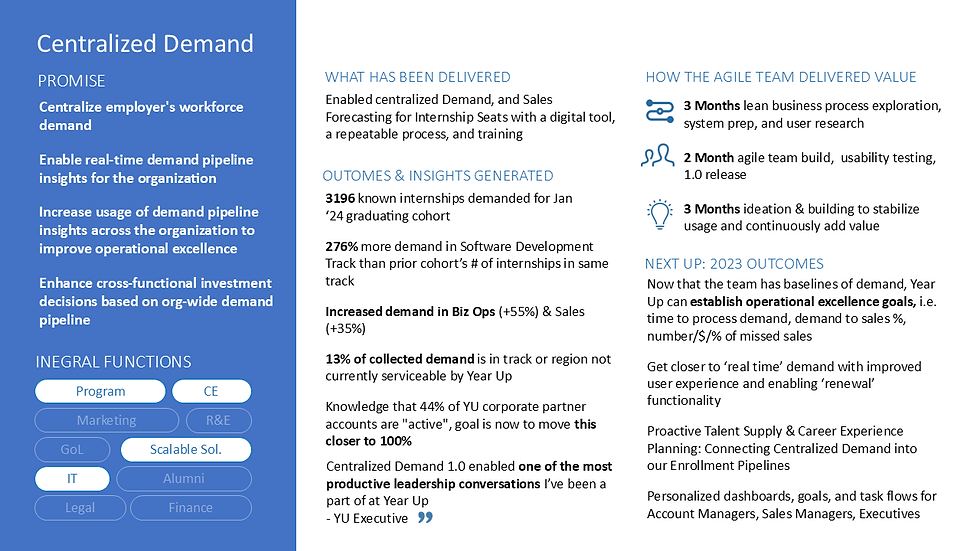

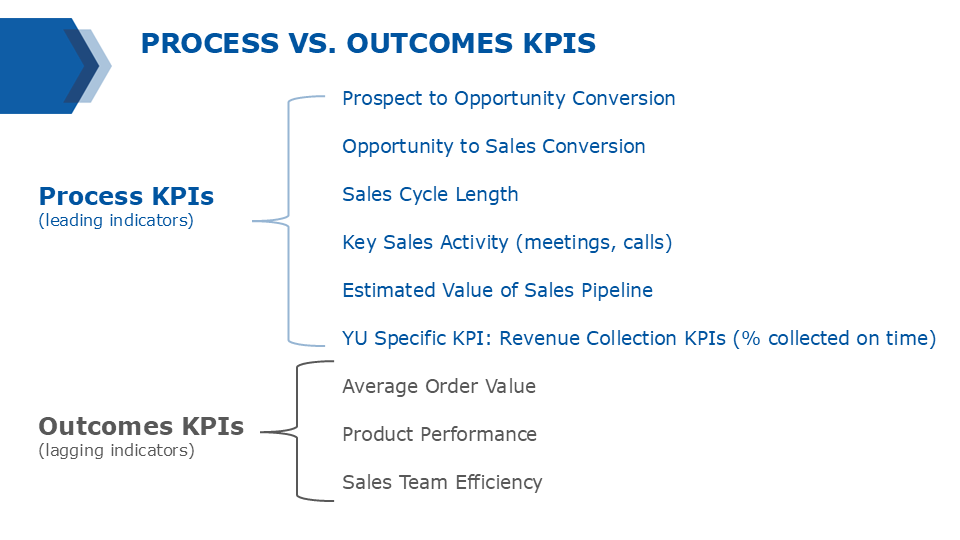



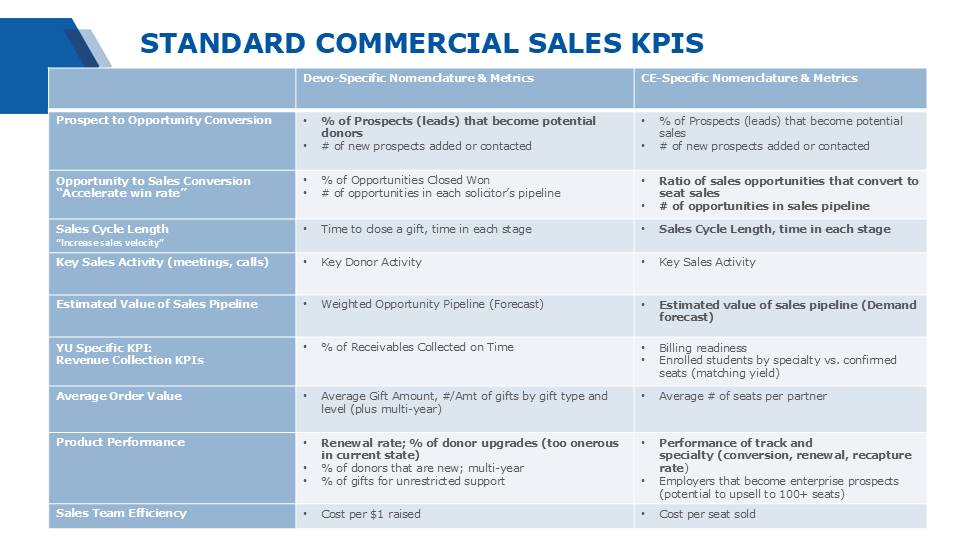





























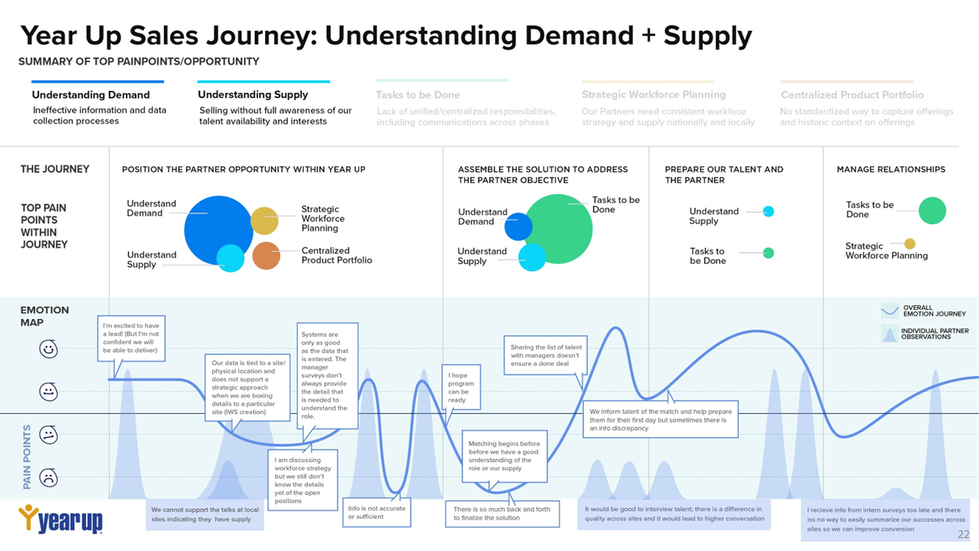



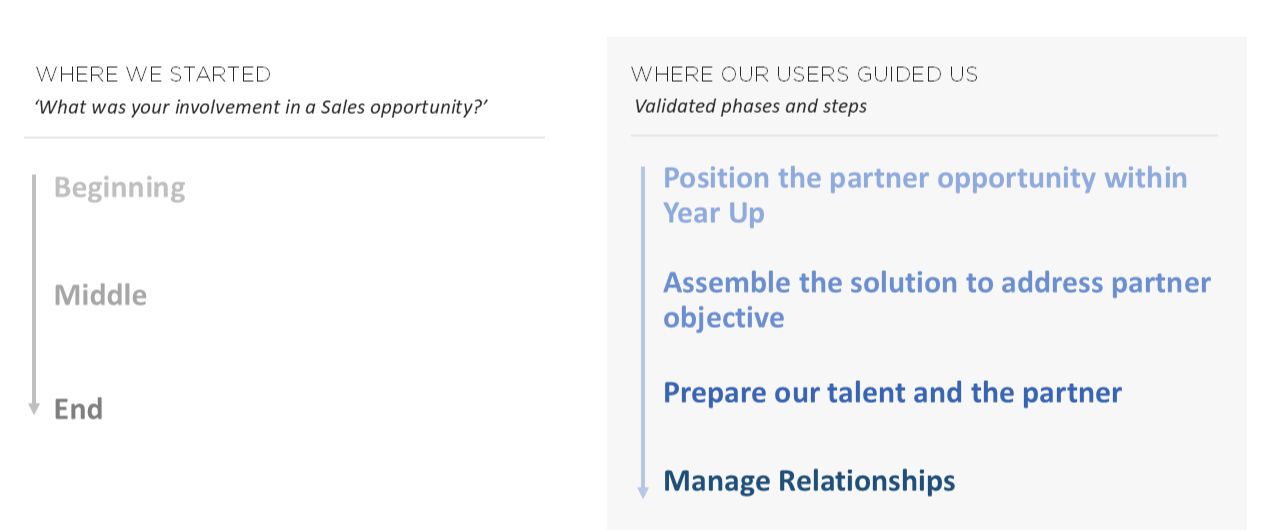

























Comments